Browse Books

Sight Readings
Jazz photography has attracted increasing attention in recent years. Photographs of musicians are popular with enthusiasts while historians and critics are keen to incorporate photographs as illustrations. Yet there has been little interrogation of these photographs and it is noticeable that what has become known as the jazz photography 'tradition' is dominated by a small number of well-known photographers and 'iconic' images.
Many photographers including African American photojournalists studio photographers early twentieth-century émigrés the Jewish exiles of the 1930s and vernacular snapshots are frequently overlooked. Drawing on ideas from contemporary photographic theory supported by extensive original archival research Sight Readings is a thorough exploration of twentieth century jazz photography and it includes discussions of jazz as a visual subject its attraction to different types of photographers and offers analysis of why and how they approached the subject in the way they did.
One of the remarkable things about this book is its movement back and forth between detailed archive research the empirical documentation of photographers their techniques working practices equipment etc. and cultural theory the sophisticated discussion of aesthetics cultural sociology the politics of identity etc. The result is both a fine scholarly achievement and an engaging labour of love.

Somatics in Dance, Ecology, and Ethics
This book of highly original essays addresses the field of movement-based and dance somatics through lenses of ethics and ecology. It is based in methods of phenomenology.
A new collection of essays previously published with Intellect as journal articles with the addition of new essays and editorial material. The text considers body-based somatic education relative to values virtues gender fluidity lived experience environmental awareness fairness and collective well-being. In delineating interdependent values of soma ecology and human movement that are newly in progress the collection conceives links between personal development of subjective knowledge and cultural critical and environmental positionality.
The text raises questions about defining somatics and self gender dynamics movement preferences normative body conceptions attention to feelings inclusiveness ethics of touch and emotional intelligence in somatics contexts. I include these crucial concerns of somatics and ethics as relational globally complex and ongoing.
Like much of Sondra Fraleigh’s writing these essays utilize phenomenology as a method to investigate embodied relationships—often through lenses of ethics and aesthetics. In providing some examples the text explores specific values of gratitude listening and emotional intelligence in somatic bodywork and learning environments.

Socially Engaged Creative Practice
This is the second book in the Performance and Communities series. An edited collection from academics and artists engages with both these notions of performance – that of identities in and through time and space - and of more formal instances of specific time-limited performances; textual embodied visual and communal.
Each chapter focuses on an individual or group’s mode of working and methodological practice of performance across a range of modes disciplines and media – from community opera to online queer performance from anti-racist class-room pedagogy to 1980s cabaret in nightclubs from community art projects in schools to community writing projects in transport interchanges the performers writers and creators represented here all engage and grapple with contemporary performance as a situated practice and as a problematic.
The personal perspective of each performer – directors librettists producers writers performers – is explicitly located in a community and the book offers a series of case studies detailing socially engaged work that aligns with concepts of performance and community.
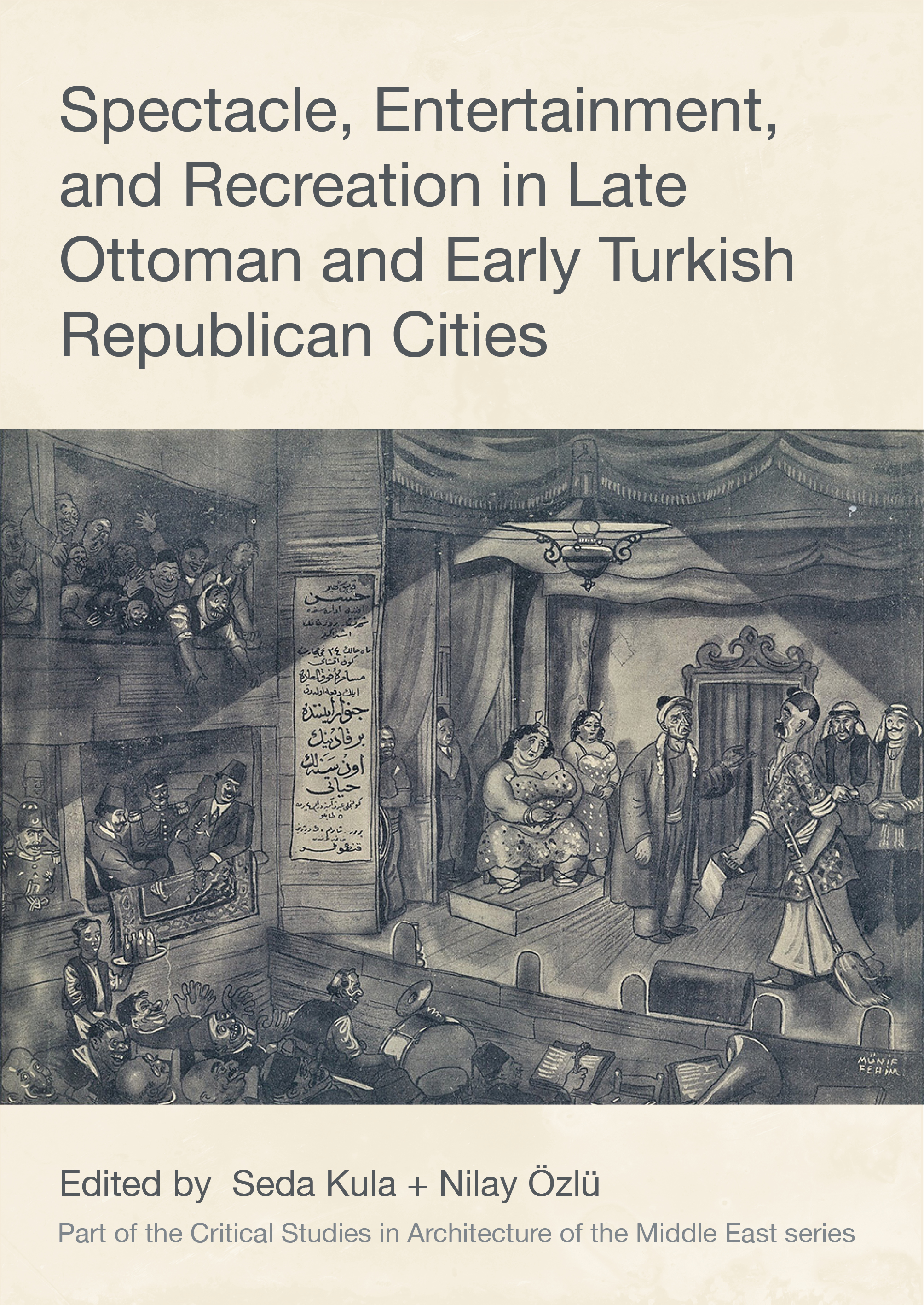
Spectacle, Entertainment, and Recreation in Late Ottoman and Early Turkish Republican Cities
The short lived Tulip Era breathed a new life into Ottoman social life and novel elements of art architecture and new spaces of leisure and entertainment that both men and women could participate and enjoy emerged during the early 18th century. Later during the 19th century triggered by the state policies to establish closer relationship with European states as well as by the royal urge to be seen and felt by their subjects more intensively and more interactively these novelties in social life were predominantly adopted and instrumentalized by the ruling elite and found their reflection in major urban centers of the empire. With the emulation of the ruling elite by various classes and due to an increasing social mobility among classes the new forms of entertainment and recreation gradually permeated into the rest of the society and ended up having a long-term impact on the Ottoman society.
Hence during the 19th century a modern urban life in Ottoman cities has emerged shaped by these new forms of recreation and entertainment and by new regimes of visibility. Ripping open of their traditional nuclei in the second half of the 19th century these urban centers accommodated –along with new trade financial industrial and residential facilities– different types of entertainment and recreation ranging from opera to cinema and from concerts to sports. Thus the late-Ottoman cities witnessed the emergence of new architectural and urban facilities such as theatres opera houses clubs performance halls sports fields and public parks. These spaces of entertainment and spectacle represented the modernizing face of the empire and also embraced by the Republican elite after the foundation of the young Turkish Republic. These public/social spaces were utilized for the making of the modern Turkish nation.
This edited volume offers an analysis of the forms and spaces of spectacle entertainment and recreation during the late Ottoman and early Republican eras. Each article focuses on different forms on spectacle entertainment or recreation in varied cities of Ottoman Empire or Republican Turkey. The edited volume aims not only to shed light on how such urban or architectural spaces were developed and shaped but also to scrutinize their impact on social cultural urban life in the modernizing Ottoman Empire and Republican Turkey.
Part of the Critical Studies in Architecture of the Middle East series.
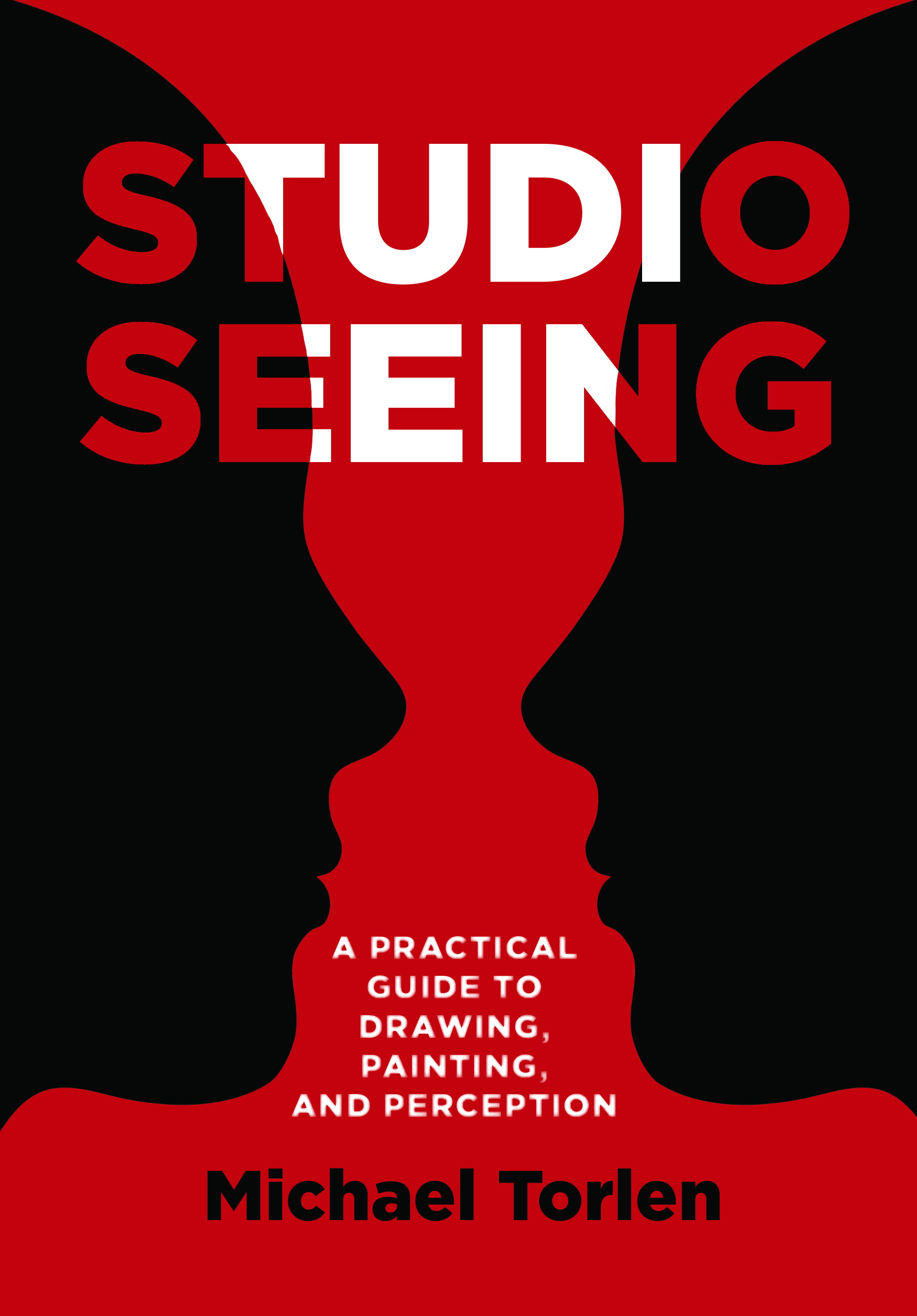
Studio Seeing
Opens with several first-person anecdotes about the author’s life as a practicing artist and a discussion of the intellectual lineage of his vision-based pedagogy. Many more anecdotes from the author’s teaching appear in most chapters.
The author discusses perception as it benefits the artist in the studio. Perceptual laws govern both our experience of seeing and the artist’s process of creating. The book presents a proven process developed by the author over many decades of teaching and studio practice that the artist can apply to their own painting/drawing and/or teaching. The painting and drawing principles in the book are essential and yet not generally taught or understood. They will benefit anyone learning how to draw/paint or advance their practice. The book will also help practitioners to make rapid progress and to avoid clichéd overused solutions. It also offers insights and discussions of interest to art lovers and “Sunday painters.” It is for everyone who enjoys viewing and thinking about art.
Integrated into the text are more than one hundred images—works of art by well-known historical and contemporary artists and students photographs and diagrams—to reinforce the concepts presented. A recap section ends each chapter followed by an exercise or group of related exercises to encourage and guide the practitioner in immediate application of the concepts.
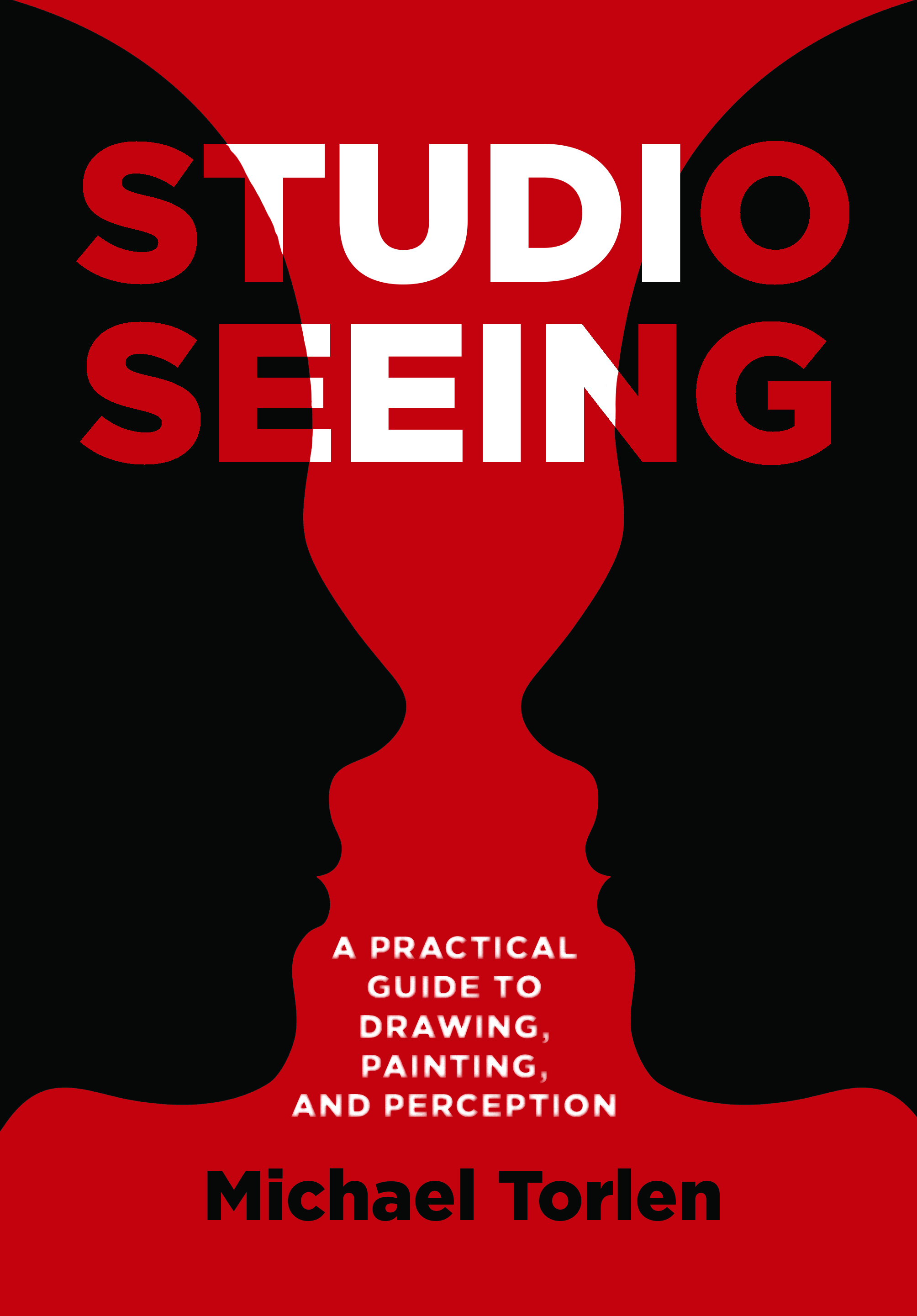
Studio Seeing
Opens with several first-person anecdotes about the author’s life as a practicing artist and a discussion of the intellectual lineage of his vision-based pedagogy. Many more anecdotes from the author’s teaching appear in most chapters.
The author discusses perception as it benefits the artist in the studio. Perceptual laws govern both our experience of seeing and the artist’s process of creating. The book presents a proven process developed by the author over many decades of teaching and studio practice that the artist can apply to their own painting/drawing and/or teaching. The painting and drawing principles in the book are essential and yet not generally taught or understood. They will benefit anyone learning how to draw/paint or advance their practice. The book will also help practitioners to make rapid progress and to avoid clichéd overused solutions. It also offers insights and discussions of interest to art lovers and “Sunday painters.” It is for everyone who enjoys viewing and thinking about art.
Integrated into the text are more than one hundred images—works of art by well-known historical and contemporary artists and students photographs and diagrams—to reinforce the concepts presented. A recap section ends each chapter followed by an exercise or group of related exercises to encourage and guide the practitioner in immediate application of the concepts.

Somatics in Dance, Ecology, and Ethics
This book of highly original essays addresses the field of movement-based and dance somatics through lenses of ethics and ecology. It is based in methods of phenomenology.
A new collection of essays previously published with Intellect as journal articles with the addition of new essays and editorial material. The text considers body-based somatic education relative to values virtues gender fluidity lived experience environmental awareness fairness and collective well-being. In delineating interdependent values of soma ecology and human movement that are newly in progress the collection conceives links between personal development of subjective knowledge and cultural critical and environmental positionality.
The text raises questions about defining somatics and self gender dynamics movement preferences normative body conceptions attention to feelings inclusiveness ethics of touch and emotional intelligence in somatics contexts. I include these crucial concerns of somatics and ethics as relational globally complex and ongoing.
Like much of Sondra Fraleigh’s writing these essays utilize phenomenology as a method to investigate embodied relationships—often through lenses of ethics and aesthetics. In providing some examples the text explores specific values of gratitude listening and emotional intelligence in somatic bodywork and learning environments.

Sonic Signatures
Sonic Signatures is an interdisciplinary collaboration of scholars and music-makers who come together to explore how music makes cities. More specifically they argue that the musical encounter composed of an array of production and consumption practices takes on particular and essential meaning at night. Thinking about music as an encounter allows one to appreciate the value and power of migration within the act of music-making.
The majority of voices amplified in the book come from so-called “migrants” understood as someone who was born in one country and currently lives and works in another. Yet these words migration migrant and migrancy are more expansive than that as they indicate a range of movement politics and place-making.
Contributions from Emilie Amrein André de Quadros Nick Dunn Pol Esteve Jillian Fulton-Melanson Jacqueline Georgis Masimba Hwati Ailbhe Kenny Seger Kersbergen Brendan Kibbee Áine Mangaoang Derek Pardue Nick Prior Austin T. Richie Willians Santos Sipho Sithole Gibran Teixeira Braga Katie Young.
A great engaging transdisciplinary contribution to nightlife studies music and the city.

Somatic Movement Dance Therapy
This book focuses on Somatic Movement Dance Therapy and the importance of self-regulation and co-regulation. The chapters attend to self-regulating different tissues through movement breath sound and the imagination.
Throughout the book the author shares processes and practices that support participants to balance their living tissues moving from sympathetic arousal into parasympathetic ease and release. The study of the autonomic nervous system and how to innervate the parasympathetic through breath awareness heart-sensing and intero-ception is the central through-line in the book.
Uniquely Williamson attends to the anatomical and physiological complexity underlying the apparent simplicity of somatic movement dance practice. How to sense-perceive and move with attuned awareness of specific body tissues such the skeletal-muscular and craniosacral system invites the reader into a deep anatomical and physiological excavation of self-regulation. The interconnectivity of fascia and the importance of cardio-ception breath awareness and gravity lie at the heart of this book. Sensory-perceptual awareness of the heart is foregrounded as the most important ingredient in the efficacy of practice as well as gravi-ception soft-tissue-rolling and fascial unwinding.
Includes a collective foreword from Sarah Whatley Daniel Deslauriers Celeste Snowber and Karin Rugman
This is a must-read practice-as-research book for under- and postgraduate students researchers and educators and especially important for practitioners who feel the weight and condescension of the mechanistic paradigm.

Storying the Self
The chapters in this collection explore the constellation of points where stories of individual experience and experiences are in dialogue with political cultural and social narratives.
Encompassing themes of individual and social identities and relationships (un)belonging motherhood academic lives and what it means to be an arts practitioner these stories and accounts continue and expand the ongoing conversations of how practitioners and academics do their work. They show the ongoing need to rethink and re-examine how to do critical and engaging scholarly work. Life stories are necessarily messy complex personal and often deal with experiences that have been challenging for the author in some way.
Contributions from Ross Adamson Suzy Bamblett Emily Bell Jenni Cresswell Hannah Davita Ludikhuijze Sandra Lyndon Vanessa Marr Jess Moriarty Éva Mikuska Holly Stewart Deirdre Russell Louise Spiers Lucianna Whittle.
This is the first book in a new series. The Performance and Communities Book Series celebrates challenges and researches performance in the real world. The series will consider how contemporary performance can engage build and learn from previous existing evolving and new communities of people – practitioners academics students audiences.
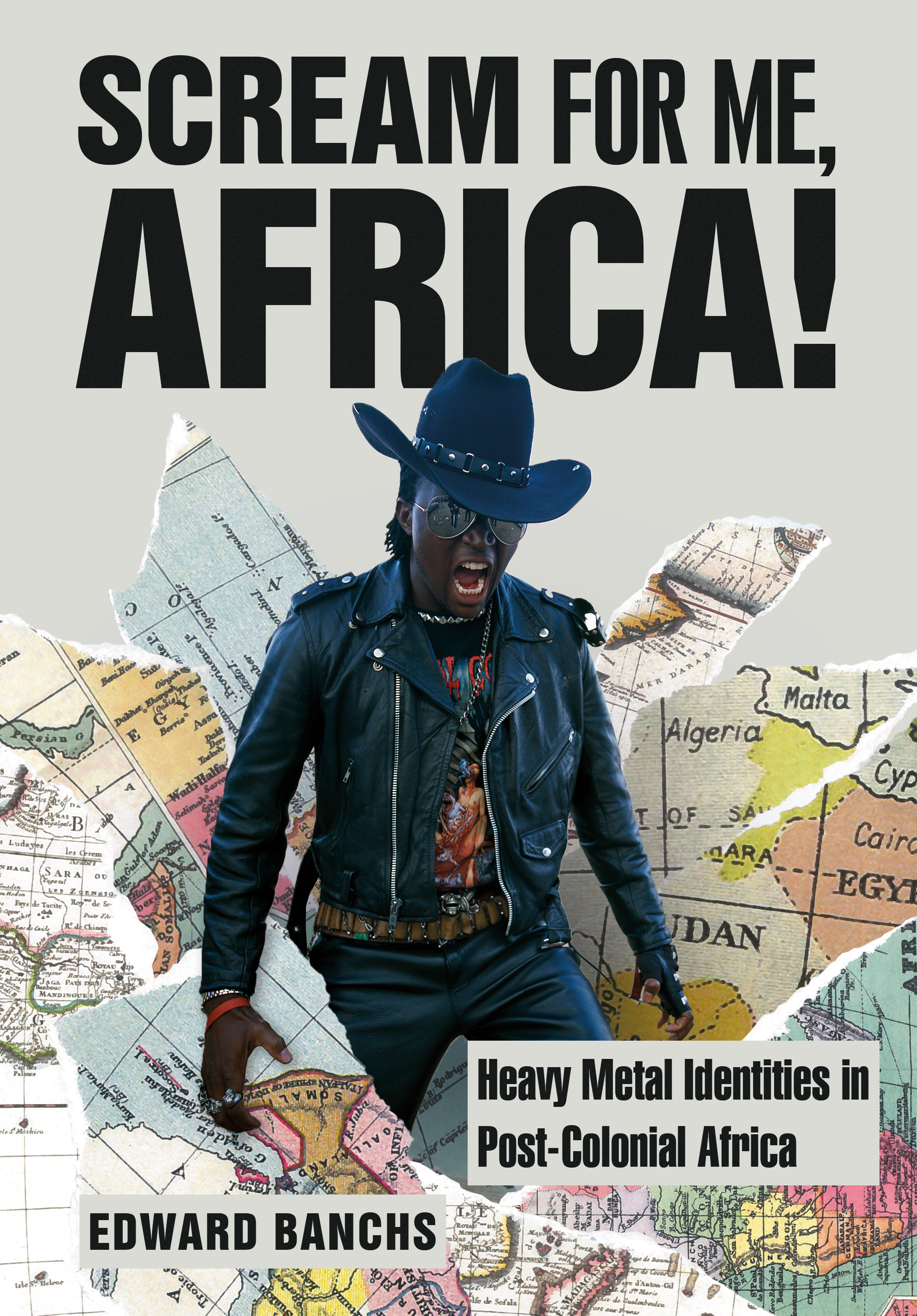
Scream for Me, Africa!
Scream for Me Africa! examines the hard rock and metal scenes in five African countries: Botswana Togo South Africa Kenya and Ghana. Banchs spent significant time in each country interviewing musicians producers and fans to create vivid pictures of each of these rarely discussed scenes. These scenes are 'a disruption of the norm a disruption of what we have come to expect from Africa and rock and metal music'. He has chosen to shed light on these particular scenes now because of their difference and because they are reflections of their countries.
This exciting new book considers how heavy metal's subculture is viewed in Africa and how musicians in the continent have stepped forward to make this genre their own. It looks at the continent's blossoming scenes through various themes including hybridity othering and how scenes have collided with their difficult political systems.
Scream For Me Africa! Is the first book of its kind and an engaging look at the various metal scenes across the African continent and how they are constructing an identity as metal fans in their modern nation states under the shadow of post-colonialism. Written in a clear approachable manner it is accessible to academic and non-academic readers.
Edward Banchs is a freelance writer and independent scholar – and a metal fan – based in Pittsburgh Pennsylvania USA whose writing has appeared in The Guardian Afropop Metal Hammer Metal Music Studies and The Pittsburgh City Paper. He is also author of Heavy Metal Africa (2016).
This new book fills a gap in the market for an academic text on metal in Africa expanding published scholarship on metal in the global south. It book has potential use as a resource on courses in several disciplines including sociology cultural studies musicology ethnomusicology sociology and Africa studies. It will also be of interest to the more general readers with an interest in the musical genre.
Will appeal to anyone who is interested in metal African culture anthropology and sociology and history. Particularly musicologists and ethnomusicologists and those with an interest in metal in the global south.
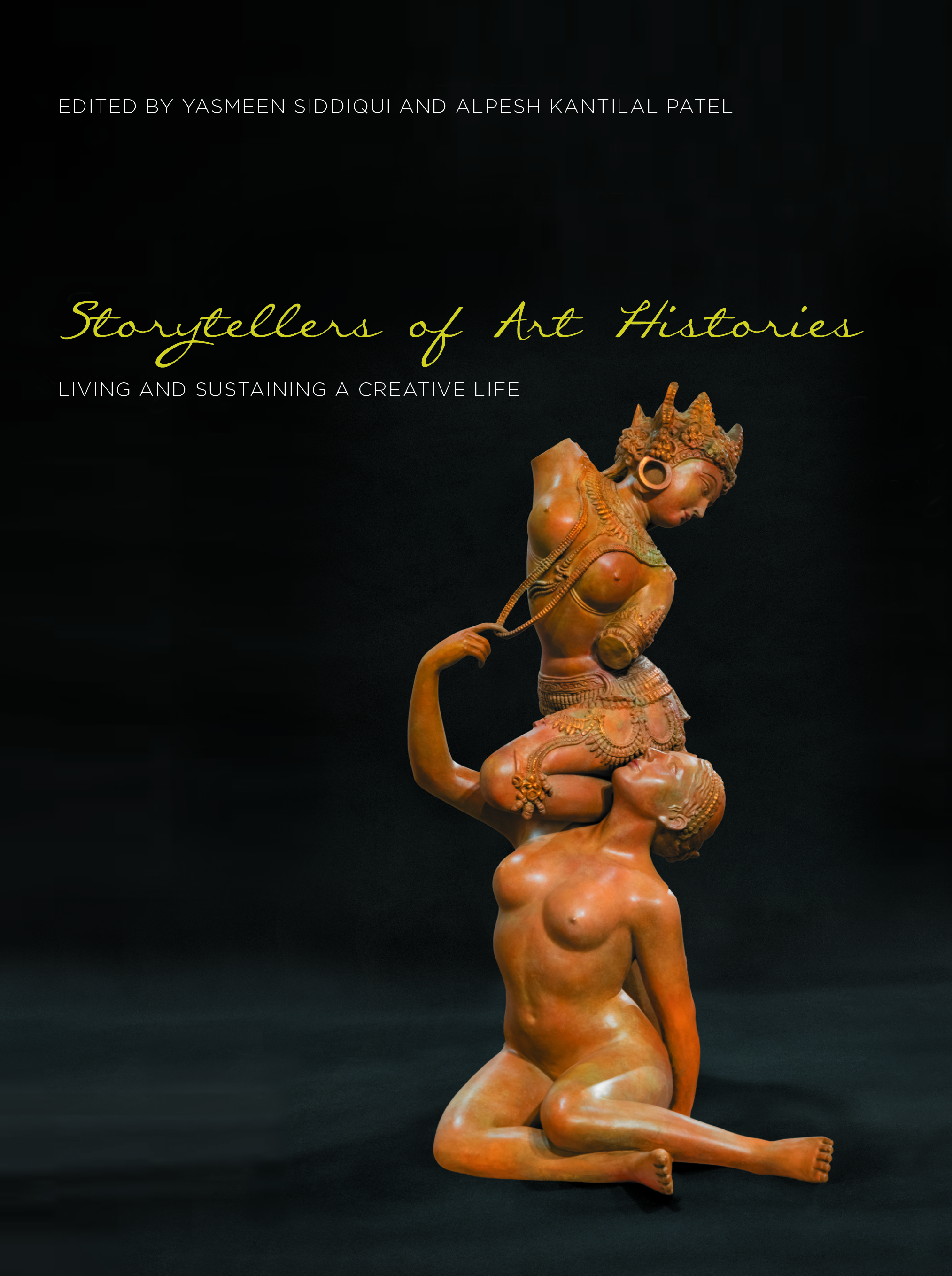
Storytellers of Art Histories
This anthology Storytellers of Art Histories gives voice to those who are reshaping art histories: not only art historians and curators but also archivists and artists.
There is a special focus on gender race (including Whiteness) class sexuality and transnationality – all of which are often marginalized in dominant art histories. Each of the contributors in this book has provided short often very personal contributions describing how they began to become passionate about their practice. A particular feature of the collection is that there are twice as many contributions by women than by men.
The contributors respond in a multitude of surprising ways appealing equally to people enmeshed in the field through their work and to those simply interested in the field. The stories you will read take various forms – a letter written to a friend a revisioned grant application the pastiche of image and text children’s fables interviews co-authored narrative memoir manifesto apology. A number of the essays perform through a combination of recollected early memory alongside scholarly research the roots of the theories they explore through publishing curating and archival work.
Many of the contributors embody overlapping cultural diasporas that suggest the porousness of borders challenging the field to understand itself as a product of regional art histories. Collecting this range of narratives born from different workplaces and disciplines speaks to our belief in the potential boundlessness of the art histories that shape the stories we consume.
Storytellers of Art Histories brings together the first-person narratives of an international group of art historians curators artists and archivists. This much-needed book book fills a significant gap in the literature showing how these practitioners’ works come together productively in the teaching and writing of art history. The anthology also illuminates the relationship between curatorial studies and art history.
Primary readership will include artists art historians archivists curators and educators. It will be a useful resource for educators and students connected with undergraduate courses in art history contemporary art history and curatorial and museum studies.
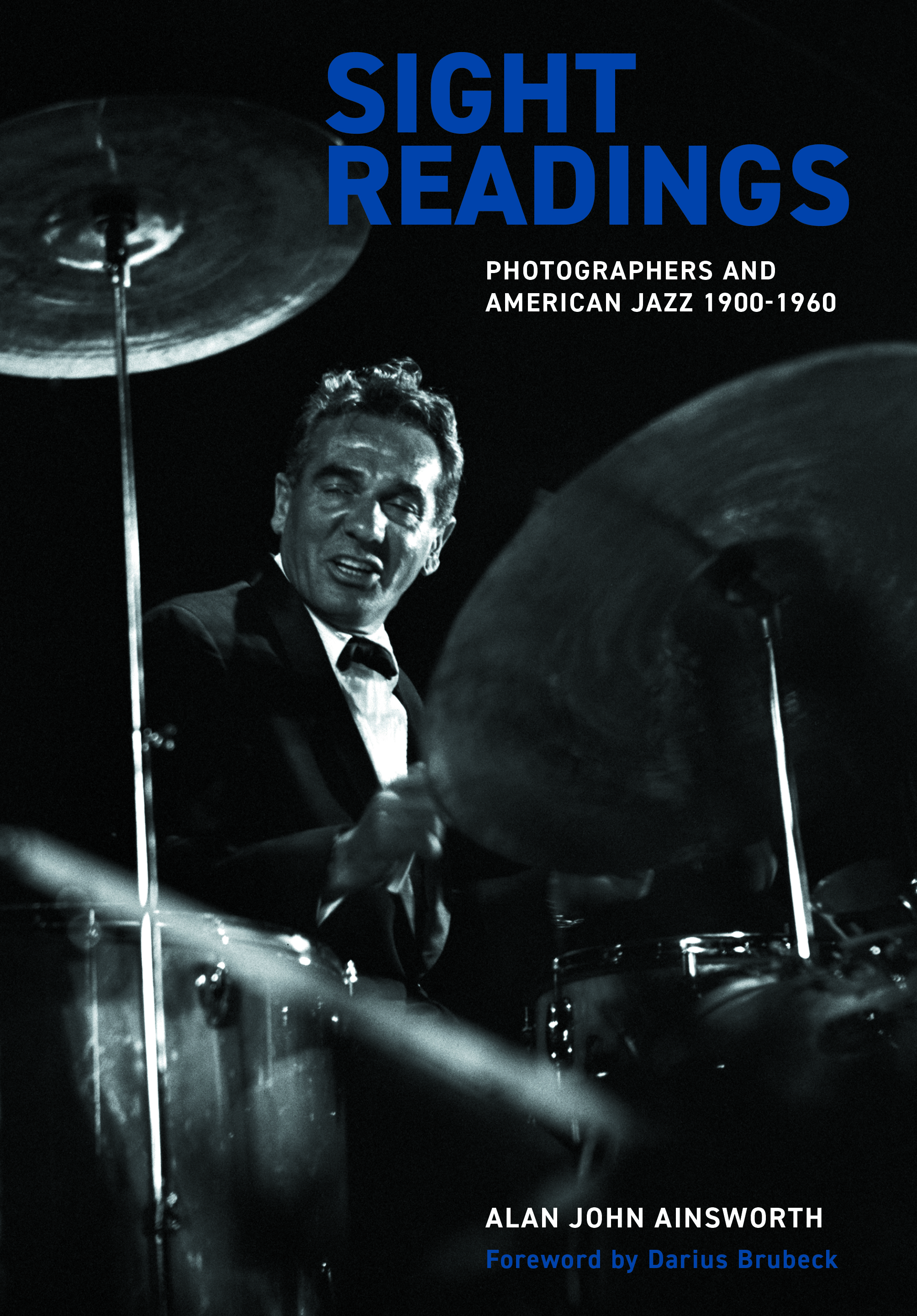
Sight Readings
Jazz photography has attracted increasing attention in recent years. Photographs of musicians are popular with enthusiasts while historians and critics are keen to incorporate photographs as illustrations. Yet there has been little interrogation of these photographs and it is noticeable that what has become known as the jazz photography 'tradition' is dominated by a small number of well-known photographers and 'iconic' images.
Many photographers including African American photojournalists studio photographers early twentieth-century émigrés the Jewish exiles of the 1930s and vernacular snapshots are frequently overlooked. Drawing on ideas from contemporary photographic theory supported by extensive original archival research Sight Readings is a thorough exploration of twentieth century jazz photography and it includes discussions of jazz as a visual subject its attraction to different types of photographers and offers analysis of why and how they approached the subject in the way they did.
One of the remarkable things about this book is its movement back and forth between detailed archive research the empirical documentation of photographers their techniques working practices equipment etc. and cultural theory the sophisticated discussion of aesthetics cultural sociology the politics of identity etc. The result is both a fine scholarly achievement and an engaging labour of love.
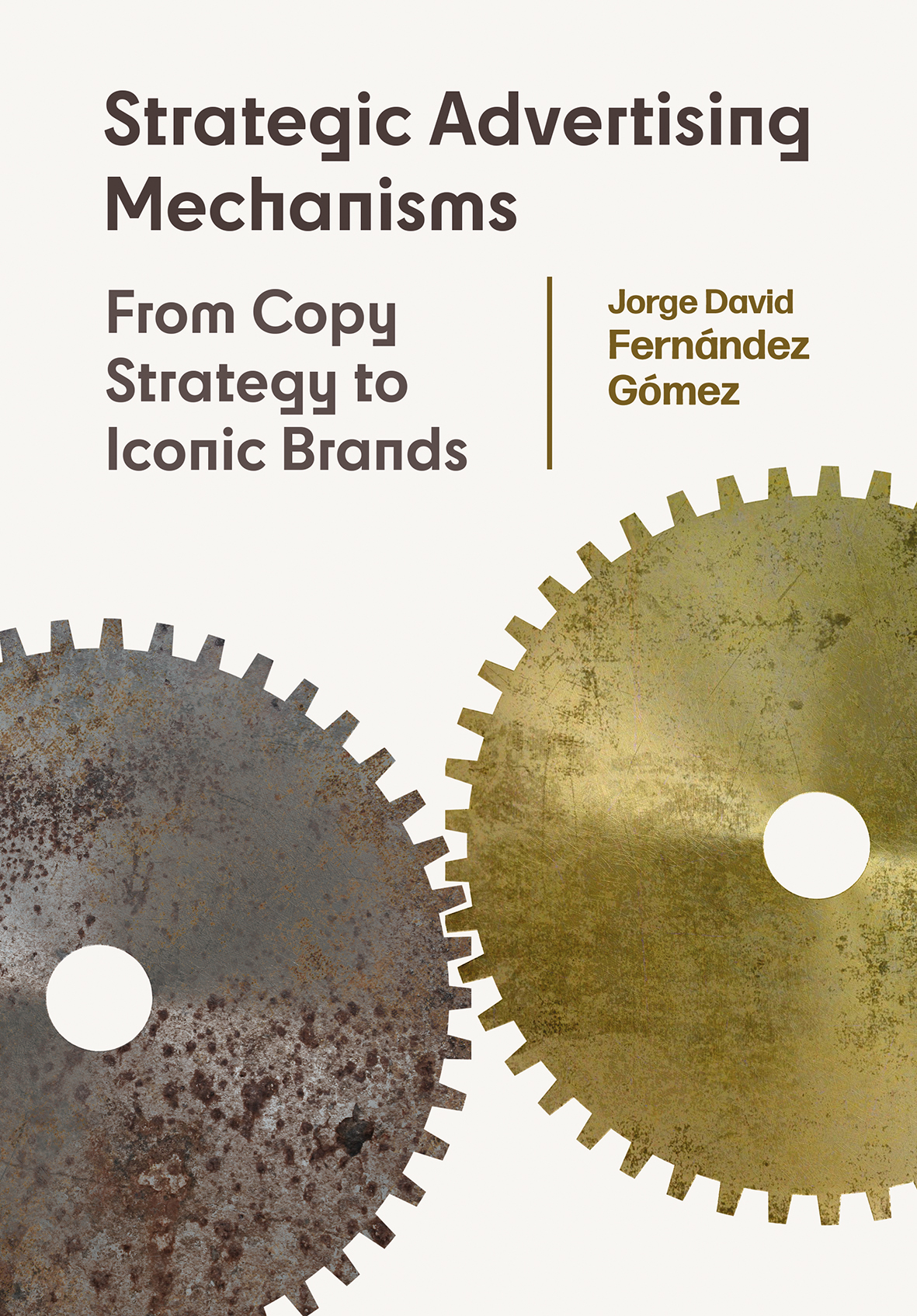
Strategic Advertising Mechanisms
It is the first time that the different strategic advertising mechanisms are explained in a single book. And this is also the first time that a book has brought together the most important and transcendent (for its applicability to the advertising market) strategic advertising mechanisms.
The text explains from classic mechanisms such as Rosser Reeves's USP or Procter & Gamble's copy strategy to modern mechanisms such as Kevin Roberts's Lovemarks or Douglas Holt's iconic brands. It also considers European mechanisms such as Jacques Séguéla’s star strategy or Henri Joannis’s psychological axis. The book has the most complete academic review.
Strategic Advertising Mechanisms: From Copy Strategy to Iconic Brands integrates the most important strategic advertising mechanisms developed throughout the time: USP brand image positioning Lovemarks... This is the first and only book to date that compiles the most consolidated methods by advertisers or advertising agencies (P&G Bates Ogilvy or Euro) in the history of modern advertising.
Primary readership will be among practitioners researchers scholars and students in a range of disciplines including communication advertising business and economic information and communication sociology psychology and humanities. There may also be appeal to the more general reader with an interest in how advertising strategic planning works.

Sine ni Lav Diaz
This original collection fills a gap in the literature on Lav Diaz and more broadly on slow and durational cinema. The importance of the director in contemporary world cinema is beyond doubt.
This collection considers Lav Diaz and his works holistically without being confined to a specific approach or research method. On the contrary it involves almost all the major contemporary academic approaches to cinema. It focuses on an auteur who has been celebrated immensely in recent times and yet has remained largely unexplored in cinema studies. The book will address this research gap.
As such this book aims to situate Diaz at the crucial juncture of ‘new’ auteurism Filipino New Wave and transnational cinema but it does not neglect the industrial–exhibitional coordinates of his cinema. The rationale behind this project is to raise questions on the oeuvre of a significant auteur to situate him in and outside of his immediate national context(s) to present a repository of critical approaches on him to reconsider the existing critical positions on him to find newer avenues to enter (and exit) his canon that will consciously avoid the time-worn rhetoric of long take and slowness of the proverbial ‘slow cinema’ camp and to find corridors in him that will lead to informed ways of reaching other movements/auteurs in other times other places.
It explores various other aspects of Diaz and his cinema whose notoriety the editors believe should not rely solely on its incredible running time. The collection looks at Diaz from the perspectives of a national and a transnational critic – one of the two editors is from the Philippines the other from another Asian location. It concentrates both on the spatial and the temporal to place him within the intricacies of the culture and creative industries and the distribution practices and politics in his native place to allow space for his ‘detractors’ who (perhaps rightly) focus on and object to his ‘artlessness’ and also to read him in the context of his fascination for the epic novel and novelistic cinema his engagement with Dostoevsky and Jose Rizal among others.
This is the first book-length study on the Filipino auteur Lav Diaz. It looks critically at his career and corpus from various perspectives with contributions from cinema studies researchers film critics festival programmers and artists. It offers a nuanced overview of the filmmaker and the cinematic traditions he belongs to for film enthusiasts researchers and general readers alike.
Primary readership will be researchers scholars educators and students in film studies. Also academics and researchers interested and working in cultural studies and Philippine studies.
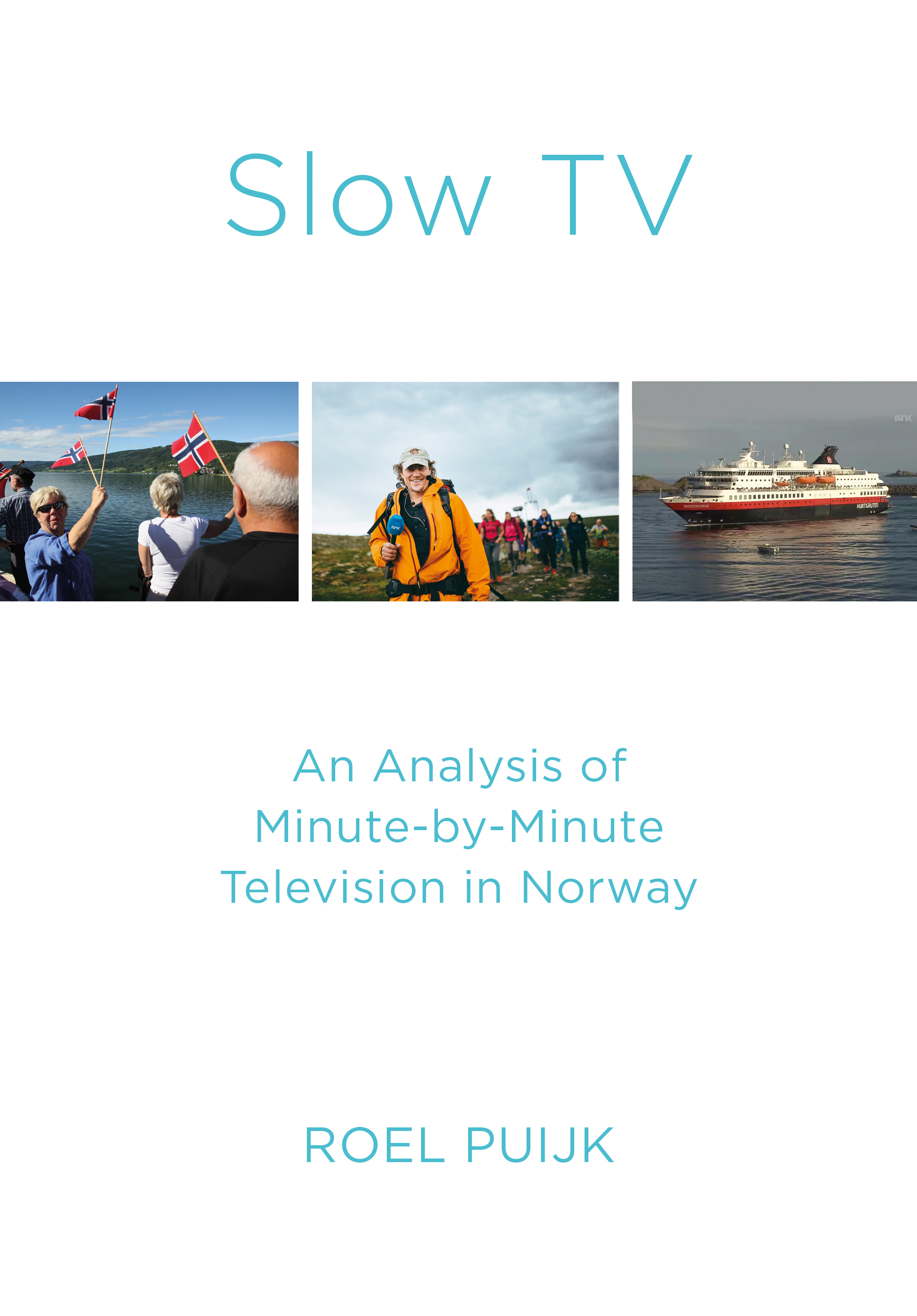
Slow TV
Slow TV has become a familiar feature of broadcasting in Norway. It refers to a set of programmes produced by the Norwegian Broadcasting Corporation (NRK) since 2009 starting out with a seven-hour broadcasting of the train ride between Bergen and Oslo.
The concept of slow TV and ‘minute-by-minute’ broadcasting was developed so that the event on television lasts as long as in real time. Several broadcasters outside Norway including BBC Four YLE SRF and Netflix have now taken up the concept of slow TV.
The first study of this genre this highly original book explores three different aspects of the phenomenon of slow TV: the perspective of the broadcaster the perspective of the producers and other actors involved in the production of the programme and that of the audience.
It goes beyond the question of genre and considers how slow TV fits into television scheduling and how the audience appeal can be understood within broader concepts such as media events media tourism reception and national identity. Public service broadcasters can be seen as having more opportunity to experiment and slow TV can be seen as a good example of public service programming. What attracts viewers to the programmes is that they invite a contemplative mode of watching: there is a chance to see something unexpected or to be introduced to interesting new things.
Illustrated throughout in full colour using stills from broadcast programmes.
This book will appeal primarily to an academic readership both researchers and students. Most readers are likely to be involved with media and communication studies cultural studies and film studies. It will also be of interest more generally to the humanities and social sciences fields as it touches on topics such as national and local identity popular culture Nordic lifestyle well-being tradition community and popular culture.
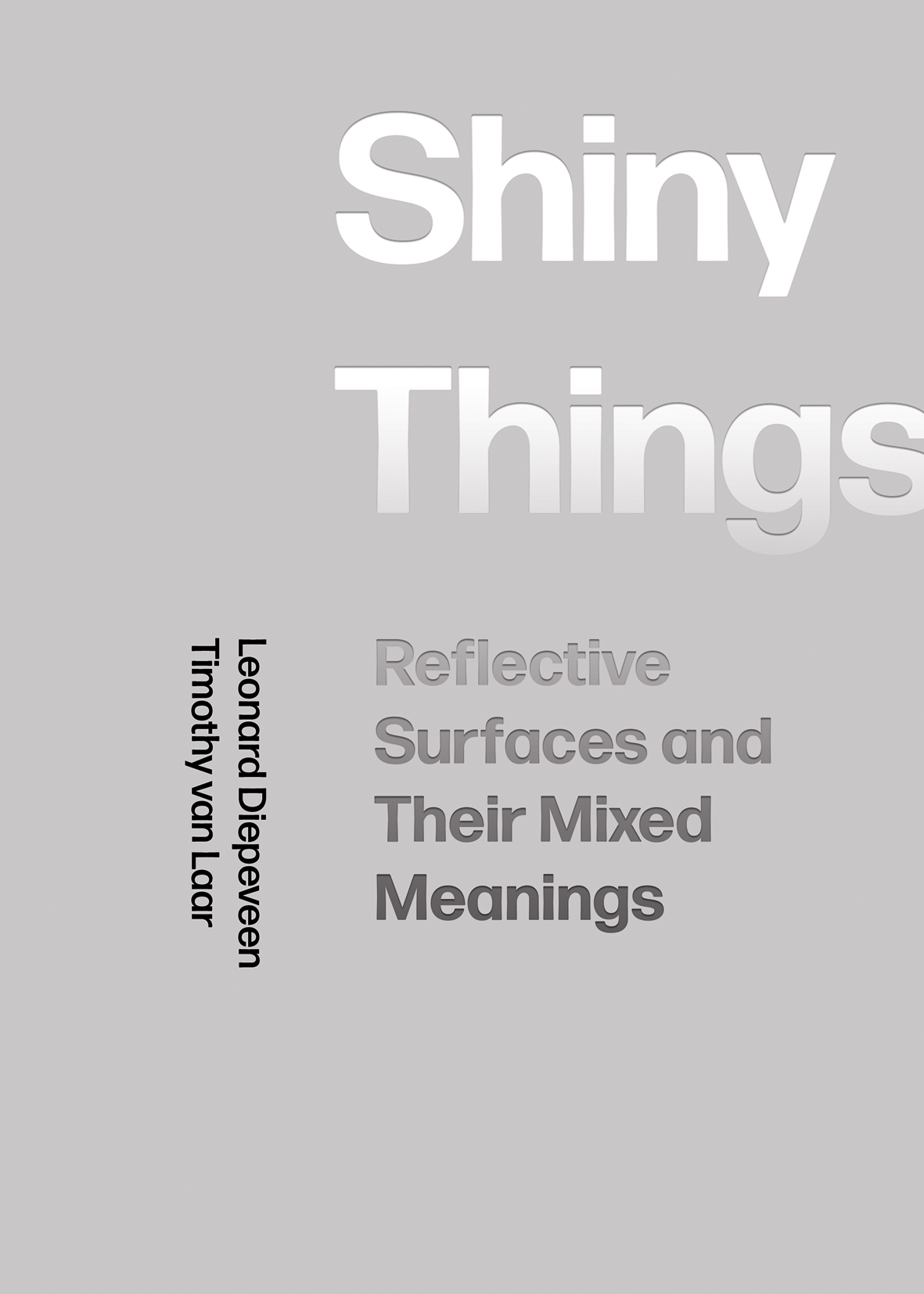
Shiny Things
Shiny Things combines an interest in visual art with a broad attention to popular culture – the wideness of its range is striking. It is more than just an expansion of subject matter which many of today’s innovative books also have – it considers how a specific physical property manifests itself in both art and culture at large and contributes to an analysis of and polemics about the world. It is accessibly written but with a careful application of contemporary theory.
Interesting informative and entertaining this will appeal to progressive thinkers looking for new ways of presenting ideas. This is scholarship that challenges stale thought and interacts with philosophical ideas in real time with a versatility that can often be lacking in traditional academic scholarship.
Using art especially contemporary art as its recurrent point of reference the authors argue that shininess has moved from a time when rarity gave shiny things a direct meaning of power and transcendence. Shininess today is pervasive; its attraction is a foundation of consumer culture with its attendant effects on our architecture our conceptions of the body and our production of spectacle. Power and the sacred as readings of the shiny have given way to readings of superficiality irony and anxiety while somehow shininess has maintained its qualities of fascination newness and cleanliness.
Examines the meanings and functions of shininess in art and in culture more generally: its contradictions of both preciousness and superficiality and its complexities of representation; the way shininess itself is physically and metaphorically present in the construction of major conceptual categories such as hygiene utopias the sublime and camp; and the way the affects of shininess rooted in its inherent disorienting excess produce irony anxiety pleasure kitsch and fetishism. All of these large ideas are embodied in the instantly noticeable sometimes precious and sometimes cheap physical presence of shiny things those things that catch our eye and divert our attention. Shininess then is a compelling subject that instantly attracts and fascinates people.
The book engages primarily with visual art although it makes frequent use of material culture as well as advertising film literature and other areas of popular and political culture. The art world however is a place where many of the affects of shininess come into clearest focus where the polemical semiotics of shine are most evident and consciously explored.
Artists as diverse as Anish Kapoor (whose popular Cloud Gate sculpture in Chicago is a repeating example in the book) Olafur Eliasson Jeff Koons Carolee Schneemann Audrey Flack Fra Angelico and Gerard ter Borch centre the book in an art discourse that opens up to automobiles Richard Nixon and Liberace.
Will be relevant to academics scholars and students with an interest in contemporary theory and material and popular cultures. Potential interest across the humanities: philosophy gender studies perhaps public relations advertising and marketing.
It will also appeal to more general readers with an interest in popular and material cultures art and aesthetics. It is written in a genuinely accessible style and its ideas and theory are embodied through examples and narratives. Will be of interest to readers of Oliver Sacks James Gleick George Lakoff James Elkins or Rebecca Solnit.

Spiritual Herstories
This is a collection of works by internationally recognized women leading the field of dance research and spirituality across the globe. Building on current soulful research scholarship in the discipline these authors offer extensive and detailed research into spirituality dance gender religion somatics and women-centred dance research. Written by women dance scholars in higher education this evocative and illuminating work highlights a growing discourse on gendered leadership in dance research. Spiritual Herstories provides new pathways and innovative research methods that respond to the educational needs of women emerging in male-centric socio-historic research traditions.

Spanish Cinema of the New Millennium
Spanish Cinema of the New Millennium provides a new approach to the study of contemporary Spanish cinema between 2000 and 2015 by analysing films that represent both ‘high’ and ‘popular’ culture side by side. The two film cultures are represented by Goya-winning films and the biggest box-office successes. By analysing the chronological trajectory of the country’s most important films over this period Spanish Cinema of the New Millennium examines contemporary Spain’s national identity culture and film industry.

Superman: The Movie
At a moment when superheroes dominate pop culture Gary Bettinson takes us back to the first comic book blockbuster. Superman: The Movie – The 40th Anniversary Interviews is a revealing behind-the-scenes portrait of the personalities and expertise that went into making this landmark of Hollywood cinema.
Marking 40 years since the film’s release this book presents all-new interviews with the cast and crew including Richard Donner (director) Ilya Salkind (producer) Pierre Spengler (producer) Margot Kidder (actor) Marc McClure (actor) Jeff East (actor) Sarah Douglas (actor) and Jack O’Halloran (actor).
The book serves as a rare insider account of an acclaimed blockbuster that was steeped in controversy throughout production. With refreshing candour the interviewees cast light on the making and legacy of Superman: The Movie.
Charting the film’s inception through to its runaway release this book provides a valuable insight into the practical logistics and day-to-day realities of mounting a big-budget production at a time when high-concept Hollywood blockbusters were only just emerging as a genre.
